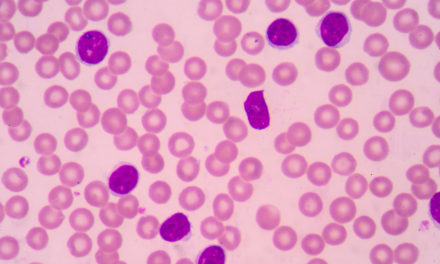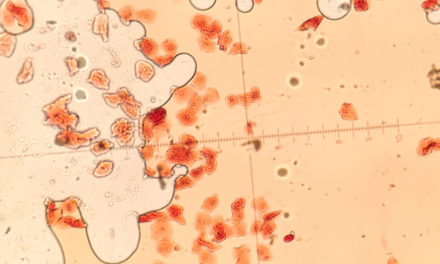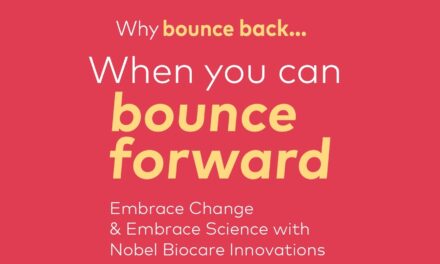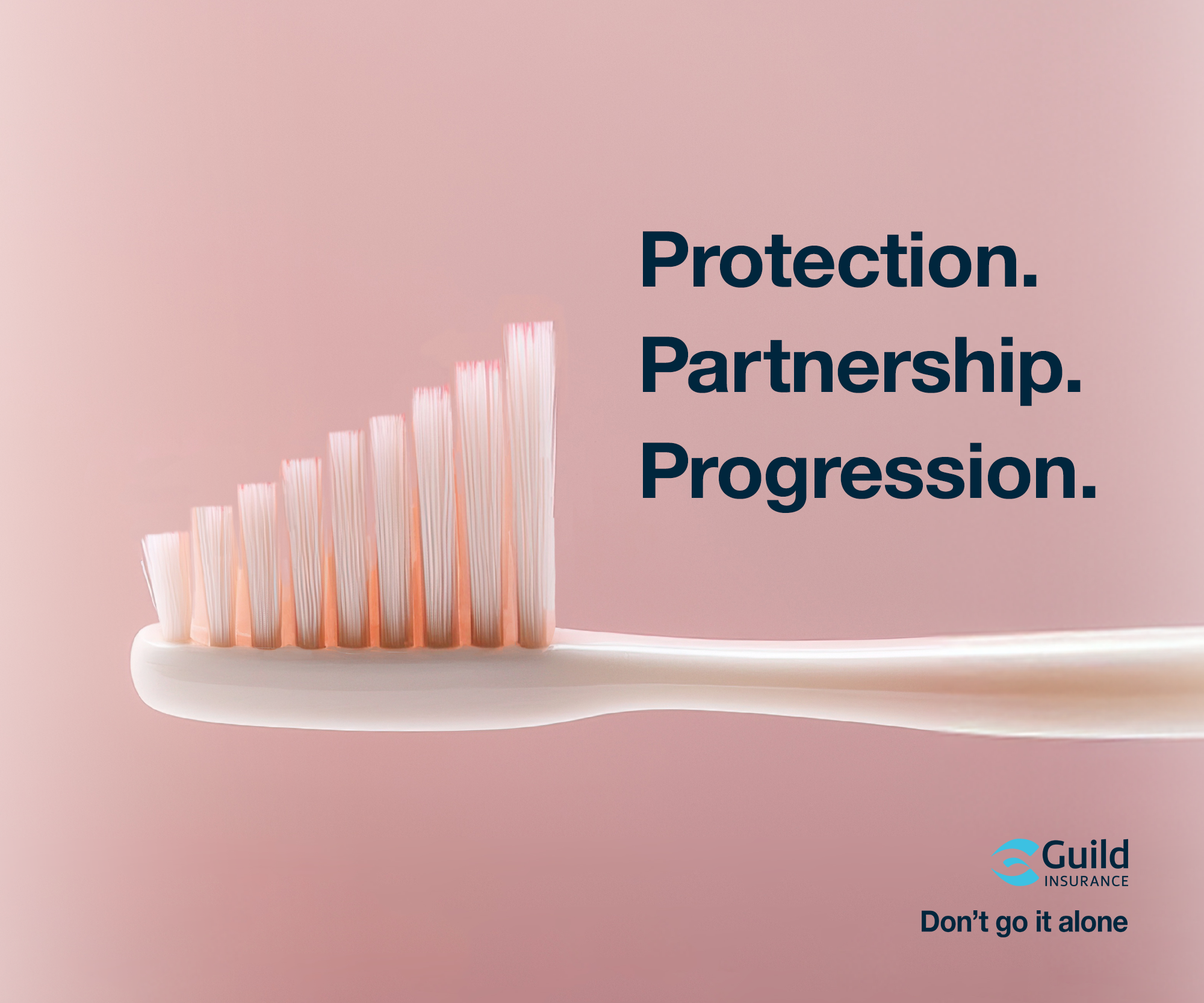Impression techniques used for single-unit crowns: findings from the National Dental Practice-Based Research Network
Dr. Michael McCracken, Professor, Department of Clinical & Community Sciences, UAB School of Dentistry, SDB Room 111,1530 Third Avenue South, Birmingham, AL 35294-0007. E-mail: mikemc@uab.edu.
Purpose
To: (1) determine which impression and gingival displacement techniques practitioners use for single-unit crowns on natural teeth; and (2) test whether certain dentist and practice characteristics are significantly associated with the use of these techniques.
Materials and Methods
Dentists participating in the National Dental Practice-Based Research Network were eligible for this survey study. The study used a questionnaire developed by clinicians, statisticians, laboratory technicians, and survey experts. The questionnaire was pretested via cognitive interviewing with a regionally diverse group of practitioners. The survey included questions regarding gingival displacement and impression techniques. Survey responses were compared by dentist and practice characteristics using ANOVA.
Results
The response rate was 1777 of 2132 eligible dentists (83%). Regarding gingival displacement, most clinicians reported using either a single cord (35%) or dual cord (35%) technique. About 16% of respondents preferred an injectable retraction technique. For making impressions, the most frequently used techniques and materials are: poly(vinyl siloxane), 77%; polyether, 12%; optical/digital, 9%. A dental auxiliary or assistant made the final impression 2% of the time. Regarding dual-arch impression trays, 23% of practitioners report they typically use a metal frame tray, 60% use a plastic frame, and 16% do not use a dual-arch tray. Clinicians using optical impression techniques were more likely to be private practice owners or associates.
Conclusions
This study documents current techniques for gingival displacement and making impressions for crowns. Certain dentist and practice characteristics are significantly associated with these techniques.
Clinicians frequently offer crowns to patients as a treatment option. Whether to protect a tooth from fracture, improve esthetics, or restore decayed surfaces, crowns provide a solution for a variety of restorative needs. Although crowns are a common factor in daily practice, little is known about the prevalence of different techniques used to make crown impressions, or variations in techniques that may exist regionally or by practice/dentist characteristics.
Steps associated with making a crown include gingival displacement, impression of the prepared tooth, obtaining a jaw relationship record, and registration of the opposing dentition. The first step, gingival retraction or displacement, often uses a mechanical element placed into the gingival sulcus, such as a cord or paste. A general goal is to create a gap of about 0.2 mm or more around the finish line of the preparation. Cordless and cord techniques can both provide this level of retraction. One recent survey reported that 92% of dentists use retraction cord. Often a chemical agent is added to induce hemostasis, or the gingival tissues might be removed surgically with a rotary instrument, laser, or heated electrode. In some studies, the techniques using retraction cord provided more displacement, but cordless techniques (paste) may have advantages in patient comfort and fewer inflammatory markers. The use of compression caps and lasers has also been reported.
A multitude of techniques exist for making impressions for single-unit crowns, with variations in impression materials, techniques, and tray types. Many clinicians use poly(vinyl siloxane) (PVS) polymeric impression materials. Even within this category, clinicians must pick a particular technique. For example, some authors advocate a putty-wash technique, during which the tray is filled with a high-viscosity PVS material, and a lower-viscosity material is injected around the prepared tooth. Other studies demonstrate that a two-stage technique is superior. In this technique, a preliminary impression is made before tooth preparation, sometimes using a spacer to provide relief in the impression. After tooth preparation, a second impression is made using a lower viscosity material. Clinicians also commonly use other combinations of viscosity materials both to load the impression tray and to syringe around a prepared tooth.
Similarly, variation exists in the type of tray used to capture the impression. One study examined 1403 impressions submitted to a commercial laboratory in the United States: a majority of the trays used were plastic (62%), and most were dual-arch (73%).In a U.K. survey of dentists, 61% used a full-arch plastic tray for crown impressions. Another U.K. survey reports 65% of impressions used a flexible tray. While some studies suggest that custom trays or rigid metal trays produce superior impressions, other authors conclude that plastic dual-arch trays, even though less rigid, provide acceptable clinical results. It is possible that higher-viscosity materials may distort more when using a dual-arch tray system.
Advances in technology offer additional options for impressions, including the use of optical (digital) techniques for making crowns. One study examined 50 crowns made with optical impressions in a general practice and documented a median marginal gap of 46 μm. Several studies compared digital and polymeric impression techniques by making multiple impressions and crowns for the same tooth and comparing the fit of these crowns. In these studies, the fit of the digitally produced crown was similar to or better than conventional techniques. In vitro work also supports the use of digital impression techniques, claiming clinically acceptable marginal fit and internal adaptation. Some data suggest that the optical impression may be faster or offer higher patient satisfaction. Optical impressions crowns may also boast fewer chairside adjustments.
The results presented in this study used questionnaire data from clinicians describing the techniques they commonly (or regularly or routinely) use to achieve gingival displacement and obtain impressions. Additionally, we identify dentist and practice characteristics significantly associated with use of these techniques. In circumstances for which clinical scientific evidence is equivocal, clinicians may gain valuable insight by observing colleagues and knowing what techniques are reported by other dentists as effective. While every dentist learns these techniques in dental school, technology and materials change rapidly, so it is helpful to identify current techniques widely used in general clinical practice.
Materials and methods
This study is based on two surveys completed by dentists in the National Dental Practice-Based Research Network (PBRN; “network”). This included the Enrollment Questionnaire, and the Clinical Techniques Questionnaire. The network is a consortium of dental practices and dental organizations focused on improving the scientific basis for clinical decision-making. Detailed information about the network is available at its website. The network’s applicable Institutional Review Boards approved the study. All participants provided informed consent after receiving a full explanation of the procedures.
Results
For this study, 2299 dentists were selected to participate. Of these, 101 were deemed ineligible before beginning the questionnaire (no longer in active practice, deceased, specialists who do not do single-unit permanent crowns). An additional 66 were deemed ineligible once completing at least part of the questionnaire (do not do at least one crown each month). This left a total of 2132 eligible clinicians, of whom 1777 responded, for a response rate of 83%. Among the 47 test/retest participants, the mean (SD) time between test and retest was 15.5 (3.0) days. For categorical variables, agreement between time 1 and time 2 showed a mean weighted kappa of 0.62 (IQR: 0.46, 0.79). Mean test-retest reliability for numeric variables was 0.75.
The majority of respondents were male, and many had been in practice for over 20 years. Most of the respondents, 73%, were practice owners. Respondents were distributed fairly evenly across regions, and the majority work full time (86%). Only 3% of respondents were specialists, including 32 prosthodontists.
Dentists indicated their most commonly used method of gingival retraction. Possible responses included: none, dual cord, single cord, injectable retraction material (e.g., Expasyl), dual impression (wash) technique, gingival troughing (e.g., electrical or laser tissue removal), and other. Only two clinicians reported using a dual impression (wash) technique, and four reported gingival troughing; for the purposes of reporting in these were combined with the “Other” category. Most clinicians used either a single cord (35%) or dual cord (35%) technique. About 16% of respondents preferred an injectable retraction technique. These preferences correlated significantly with dentist and practice characteristics.
Dentists reported using chemical agents to control hemostasis on 57 ± 38% of impressions. Some 37% of respondents use these agents more than 90% of the time, and 22% use them less than 10% of the time.
When making crown impressions, dentists were asked to indicate the percentage of time they use the following techniques: PVS, polyether, optical (digital or CAD/CAM), hydrocolloid, or other. While some clinicians might use 100% PVS, as an example, other clinicians might use multiple techniques in varying percentages. The average (±SD) responses overall for each technique were: PVS, 77% (39); polyether, 12% (30); optical, 9% (26); hydrocolloid, 1% (10); other, 1% (9).
The dentist who prepared the tooth made the impression 98% of the time, and an assistant made the final impression 2% of the time. The dentist who prepared the tooth made the provisional 49% of the time, and an assistant made the provisional 50% of the time. The remaining responses included offices that do not make provisionals, or make them with a combination of efforts between the dentist and auxiliary.
Discussion
The use of optical scanners is perhaps reaching a tipping point, with dentists reporting they use optical impressions about 9% of the time to make single-unit crown impressions. This trend is expected to continue, as more clinicians choose to make crown impressions digitally, and apply this technology to other aspects of dentistry, such as fabricating removable prostheses. However, there is little documentation of the prevalence of these techniques in private practice, or which practitioner characteristics correlate with their use. Three factors were significantly correlated with the use of digital scanners among clinicians who used digital impressions more than 90% of the time for single-unit crown impressions: race, type of practice, and practice busyness. While the use of advanced technology is often associated with younger people, that was not the case in this sample, with no difference among users who had graduated from dental school recently, compared to those who had been in practice longer. It appears that the use of digital scanners has appeal across all generations of dentists.
By practice type, the clinicians who used digital impressions were more likely practice owners or associates, while clinicians in large group practices did not report widespread use of digital impression technology. This is somewhat surprising, as a larger office may have greater financial resources for the use of an optical scanner. The association may reflect a more nimble decision structure present in a smaller private practice, or a desire to standardize techniques and materials within a larger group structure, pushing the group toward more conventional materials. Also, with a larger group, more people must agree on an expensive capital investment, and in particular the brand or type of technology to purchase. This may delay the decision in some cases.
Practices that were not overly busy were more likely to use digital technology. This may be associated with having adequate time to implement a new impression technique into practice. Also, clinicians burdened with their clinical load may be less likely to invest time into new technology, particularly when its use has not reached a point of majority use within the industry. Finally, clinicians of different races reported different levels of digital impression utilization, with clinicians reporting their race as white or other using digital impressions more than clinicians who reported their race as black or Asian. It is unclear why these differences exist.
The most popular overall impression material for single-unit crowns was polymeric impression materials, especially PVS materials. These numbers were slightly lower than a U.K. dentist survey, which reported about 90% use of silicone materials (addition and condensation) and 9% of dentists using polyether materials. That same study, published in 2005, reported that 1% of restorations were made using CAD/CAM technology, far lower than the results presented here, over a decade later. A similar study, published in 2012 by the same author, found that addition silicone was used 71% of the time, and polyether materials 17%, numbers similar to our findings. They also noted that female clinicians were less likely to use polyether impression materials.
The polymeric material viscosity used to fill the impression tray varied statistically by most parameters reported in this study. Overall, approximately one-third of practitioners use medium body in the tray, and two-thirds use putty in the tray. This occurs despite some evidence that suggests that higher-viscosity materials distort impressions more when using disposable trays. Clinicians who graduated more than 15 years ago reported less use of heavy-body materials in the tray, but a higher use of putty. Clinicians in larger group practices reported frequent use of medium-body materials in the impression trays, at 49% and 46% for HealthPartners and Permanente Dental Associates clinicians, respectively. This may be due to an effort to standardize material choice by using a medium-viscosity material to appeal to various dentist preferences in a large group setting.
The overall use of dual-arch trays in this survey was similar to that reported by Mitchell et al, who observed that about 60% of dual-arch trays used are plastic. Of the impressions examined in that study, 73% were dual-arch; however, this also included impressions for implant crowns, inlays, onlays, and veneers, which were types of restorations not considered in this survey. The results were echoed by Storey and Coward, with 65% of impressions made with flexible trays. While some controversy exists regarding the use of a dual-arch impression tray, clearly it is popular in practice. The use of the dual-arch impression tray is supported in the literature. Considering practice characteristics, several factors were associated with tray choice. Black and Asian clinicians used more plastic frame dual-arch trays, while white clinicians were more likely not to use a dual-arch technique. Clinicians who had been in practice more than 15 years were less likely to use a dual-arch technique, which may reflect a change in views over time regarding this technique. Clinicians in the HealthPartners group were much more likely to use a metal frame dual-arch tray than a plastic one, reflecting a possible group preference for this technique. It is unclear why practitioners from different parts of the country would use different tray types, but regional differences are notable. This may reflect differences in philosophies at dental schools located in these regions or differences in regional key opinion leaders, or perhaps vendor marketing and opinion in a particular area.
Interest is growing in expanded duty dental assistant functions. It was noted in this survey that 2% of final crown impressions, and 50% of provisionals, are made by dental auxiliaries. Future analyses from this study will evaluate the fit of crowns clinically. If differences exist between dentist impressions and auxiliary impressions regarding clinical crown acceptability, these may become evident. This data will contribute to the discussion of expanded duty functions.
Conclusion
By understanding the wide variety of techniques used to make impressions for single-unit crowns, clinicians may modify their own techniques and approaches to optimize impression and gingival retraction techniques. Clinicians learn from other clinicians. Great variability exists regarding the type of techniques used for gingival displacement and impression making, and these variations are significantly associated with dentist and practice characteristics.










